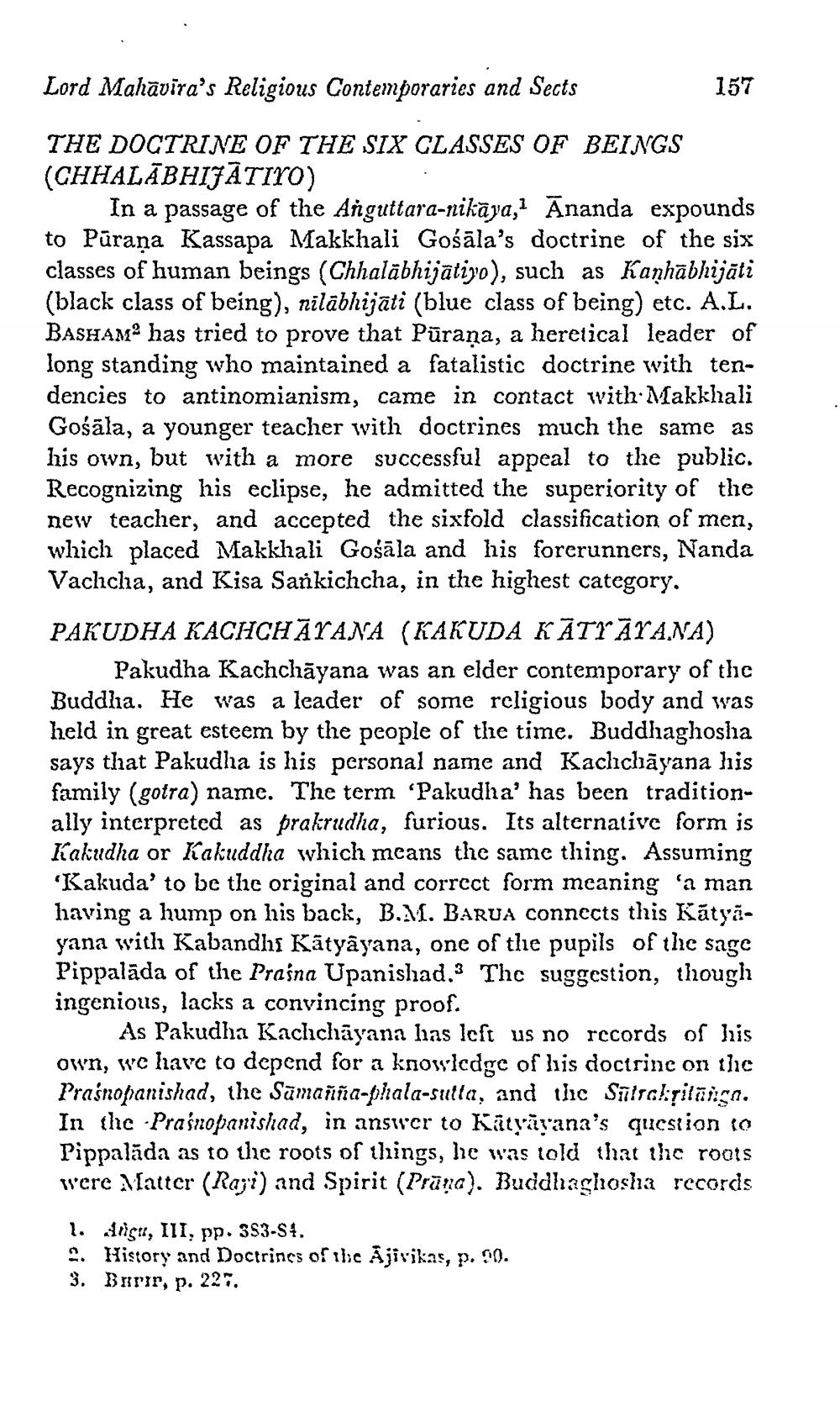________________
Lord Mahavira's Religious Contemporaries and Sects
THE DOCTRINE OF THE SIX CLASSES OF BEINGS
(CHHALABHIJĀTIYO)
157
In a passage of the Anguttara-nikaya, Ananda expounds to Pūraṇa Kassapa Makkhali Gośāla's doctrine of the six classes of human beings (Chhalabhijātiyo), such as Kanhābhijāti (black class of being), nīlābhijāti (blue class of being) etc. A.L. BASHAM2 has tried to prove that Pūraṇa, a heretical leader of long standing who maintained a fatalistic doctrine with tendencies to antinomianism, came in contact with Makkhali Gośāla, a younger teacher with doctrines much the same as his own, but with a more successful appeal to the public. Recognizing his eclipse, he admitted the superiority of the new teacher, and accepted the sixfold classification of men, which placed Makkhali Gośāla and his forerunners, Nanda Vachcha, and Kisa Sankichcha, in the highest category.
PAKUDHA KACHCHAYANA (KAKUDA KĀTYĀYANA)
Pakudha Kachchāyana was an elder contemporary of the Buddha. He was a leader of some religious body and was held in great esteem by the people of the time. Buddhaghosha says that Pakudha is his personal name and Kachchayana his family (gotra) name. The term 'Pakudha' has been traditionally interpreted as prakrudha, furious. Its alternative form is Kakudha or Kakuddha which means the same thing. Assuming 'Kakuda' to be the original and correct form meaning 'a man having a hump on his back, B.M. BARUA connects this Katyayana with Kabandhi Katyayana, one of the pupils of the sage Pippalada of the Praina Upanishad. The suggestion, though ingenious, lacks a convincing proof.
As Pakudha Kachchayana has left us no records of his own, we have to depend for a knowledge of his doctrine on the Prasnopanishad, the Sāmañña-phala-sutta, and the Sutrakṛitanga. In the Praśnopanishad, in answer to Katyāyana's question to Pippalada as to the roots of things, he was told that the roots were Matter (Rayi) and Spirit (Prāṇa). Buddhaghosha records
1. digu, III, pp. 353-St.
2. History and Doctrines of the Ajivikas, p. 90. 3. Burir, p. 227.




